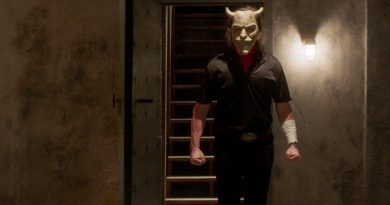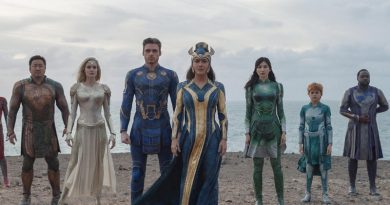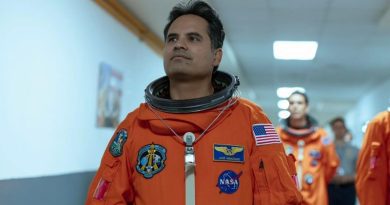Dune: Part Two (2024) Review: An Engrossing Sci-Fi Spectacle
Paul: Desert power.
Chani: This is only the beginning.
Those were the last words between Timothee Chamalet’s Paul and Zendaya’s Chani after the former was impressed by the incredible sight of a Fremen riding one of the sandworms, which ended the first part of Denis Villeneuve’s Dune. That was over two years ago and if it weren’t for Hollywood’s dual strike, we would have been able to see the highly-anticipated follow-up in November last year.
The first Dune may have been far from the sci-fi masterpiece I expected, but it still improved over the clunky 1984 version. Of course, Denis Villeneuve’s 2021 version has its fair share of shortcomings including the visually distracting shield technology and mostly dimly-lit action sequences. Not to mention the pacing issue during the protracted third act after recently revisiting the movie.
Now that the highly-anticipated follow-up is finally here, is it worth the long wait? The answer is a resounding Y-E-S. It’s as epic as it gets and Villeneuve sure delivers that promise. And what a visual spectacle, especially if you watch this on IMAX as it is meant to be.
But before I continue with my review, here’s what happens in Dune: Part Two: The story picks up shortly after the events of the first film as Paul and his reluctant mother Jessica (Rebecca Ferguson) choose to join the Fremen led by Stilgar (Javier Bardem). They continue their journey along the desert planet of Arrakis and from there, they face an imminent danger against the tyrannical Harkonnens ruled by Baron Vladimir Harkonnen (Stellan Skarsgard), who was responsible for massacring the Atreides family.
As the war rages on, the sequel also introduces plenty of new characters, namely Baron’s youngest nephew Feyd-Rautha Harkonnen (Austin Butler) and Emperor Shaddam IV (Christopher Walken) as well as his daughter, Princess Irulan (Florence Pugh).
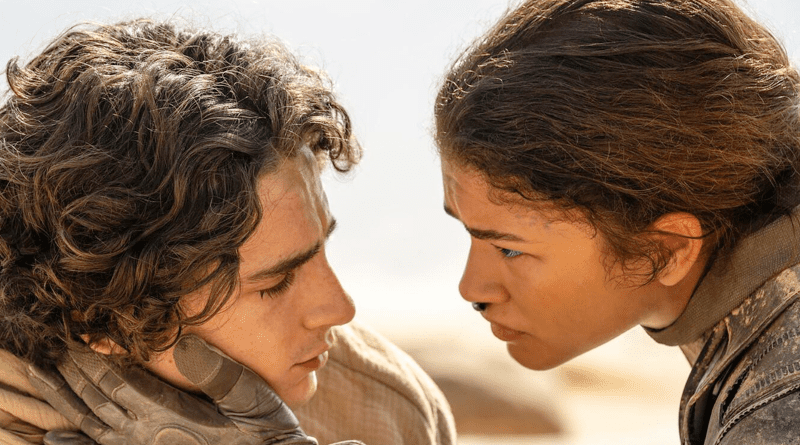
Dune: Part Two runs around 10 minutes longer than the first film and unlike the latter’s admittedly exposition-heavy narrative approach, Villeneuve and returning co-writer Jon Spaihts successfully raises the stakes reminiscent of a war-movie structure. It helps that Hans Zimmer’s atmospheric and energetic score enlivens the film. The follow-up wastes little time giving us a taste of the battle between the Paul-led Fremen and the Harkonnen soldiers in the earlier scene, showcasing Villeneuve’s (thankfully!) better handling in the action department. He also shows a good sense of visual panache — a battle in the otherwise vast plain-looking dune of Arrakis contrasting with the sights of the crimson-orange sky.
The action gets better as the film moves on. Scenes like Fremen’s tactical ambush against the Harkonnen’s battleship and ornithopter and some hand-to-hand combats, notably the violent knife fight between Paul and Feyd-Rautha are all visually captivating. Since Villeneuve stages Dune: Part Two like a war movie, he doesn’t forget to pull back his camera with Greig Fraser again in charge of the cinematography, allowing us to immerse in the widescreen view of exploding vehicles or properties.
Fraser’s cinematography deserves equal praise for his excellent use of colour (the aforementioned earlier sequence is one of them) and so does the strangely monochrome visual palette taking place in the gladiatorial arena of Harkonnen’s homeworld, Giedi Prime. The latter evokes a surrealistic visual quality which also effectively introduces us to Austin Butler’s Feyd-Rautha (a role previously played by the red-haired Sting in the otherwise epic 1984 debacle), a bald and sadistic Harkonnen warrior whose stark-cold remorseless presence easily made him one of the best characters in Dune: Part Two.
The sandworm, which was previously hinted at in the first film, is now prominently featured in this follow-up. And yes, there are more of these intimidating giant worm-like creatures and the IMAX screen certainly captures the monumental scope of their appearances. A crucial scene of Paul finally getting his chance to ride a sandworm is undoubtedly a sight to behold.
Villeneuve may have been pulling all the stops in terms of the visual spectacle but he doesn’t forget to tell an intriguing story about a young man’s quest to lead the uprising with the Fremen against the Harkonnens. Kudos also go to Villeneuve’s crafty storytelling later in the film as the plot thickens and here, we learn more about some of the characters’ motivations.
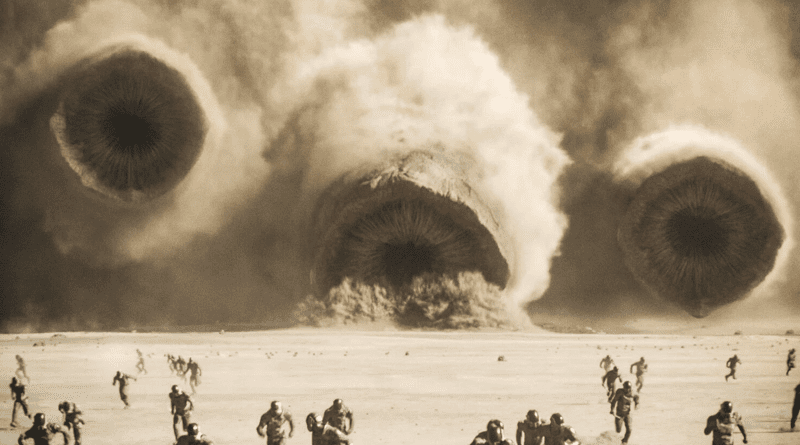
The story delves deeper into intergalactic politics and related themes of power and corruption. Sure, it’s all familiar stuff since Frank Herbert’s 1965 novel Dune has already inspired many like-minded sci-fi films, notably Star Wars back in 1977. And yet, that doesn’t stop Villeneuve from turning the otherwise oft-told storyline into an engrossing cinematic experience.
The cast, in the meantime, is a mixed bag. Timothee Chamalet is given a substantial character arc, moving away from an inexperienced Paul Atreides seen in the first film and has now become more confident in embracing his destiny. Many Fremen including Stilgar (Javier Bardem fares better this time around and even provides some of the movie’s unexpectedly much-needed comic relief) see him as a messiah a.k.a. the chosen one while others remain sceptical.
Rebecca Ferguson delivers a solid supporting turn as Paul’s manipulative mother, Jessica. Zendaya’s role as the tough Chani, who eventually falls in love with Paul, is given more screen time and she does a good job here. Stellan Skarsgard’s Baron Vladimir Harkonnen, however, seems to be less effective in this follow-up while Dave Bautista’s impulsive Rabban is worth mentioning.
As mentioned earlier, Austin Butler’s Feyd-Rautha is impressive but the same cannot be said for other franchise newcomers. Christopher Walken seems like an inspired choice to play the scheming Emperor Shaddam IV but he looks as if he’s sleepwalking throughout his role. Dune: Part Two also wasted the otherwise talented Florence Pugh in a thankless role as Princess Irulan. If there’s any consolation, at least she isn’t as bad as Virginia Madsen previously played the character in the 1984 version.
Dune: Part Two ends with another cliffhanger and yes, there are more stories to tell since the late Frank Herbert wrote five more books between 1969 and 1985. Villeneuve is reportedly interested in making the third film and second book in the series, Dune Messiah. Here’s hoping he’s given the green light to go ahead sometime in the future. But until then, go watch Dune: Part Two on IMAX.



